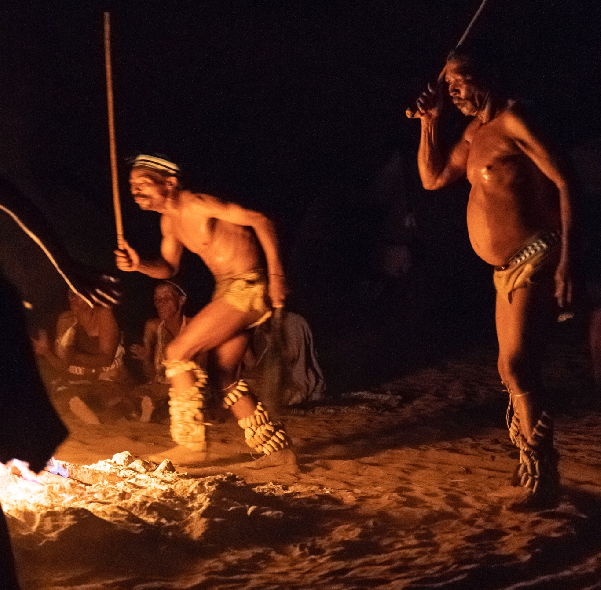
Reporter’s Diary: The gods are definitely not crazy

Did you ever watch the movie The God’s Must Be Crazy? It was released in September, 1980 and for many people outside of Southern Africa, this could easily have been their first
interaction with the San people who live in that region.
The movie is about a soda bottle that fell out of a plane and onto land belonging to a San
community. A bottle of its kind had never been seen by the community that found it, and as they walked to the end of the world to dispose of it, a lot of comedy ensued. But as all
movies go, you never really get the full picture. To truly understand a people, a little history lesson works the charm. The best way however, is to simply have a conversation.
In late 2019, I accompanied a specialized film crew to Botswana. We were headed to a place called Ghanzi, about seven hours drive from the capital Gabarone. Here we were to meet with some San elders and some youth, to interview for our upcoming series – Tribes in a Flux.
It was summer time, and very dry. There were dust swirls on the side of the road and it was lovely to see all the horses on ranches that flanked the roads on either side. But it would have been ill-advised to venture out without sunscreen or a hat. I flew from Gabarone to Maun, cutting my road trip short by 4 hours. And straight away, because of the few cars on the roads, it seemed like nobody lived there.
Botswana is a large country, with a population of about 2.2 million. Of this number, about
3% are from the San tribe. Being the oldest recognized tribe and culture in the world, I was interested to learn about what parts of their culture they still practiced and how they had evolved to adapt to changes around them. Also, it was my first time in Botswana.
Two things stood out for me here; the healing dance and the unique paintings on canvas
that they sold to make ends meet. Our main host during the trip was village elder Xgaiga
Qomatca, a friendly man who was both a healer and a painter.
Dance into the night
The idea of the healing dance is for the community healers to dance themselves into a
trance, and then use that spiritual energy to take your pain away. The night we witnessed
this, Qomatca danced around a massive bonfire with another healer and a young boy. They
had shells tied to their legs that jingled in rhythm as they danced.
There were women seated around one side of the fire, clapping with cupped hands and singing along. Every once in a while, Qomatca and his colleague would pick a coal from the fire with their bare hands, blow on it, throw it back and then place their hands on those in need of healing.

I had to try. After handling some hot coal, Qomatca’s companion placed his hands on my
back and head, while singing – in a move to take my pain away. I had no pain to begin with but since they had danced and sang non-stop for over an hour, it was impossible not to feel the energy. I found it amazing that this dance was thousands of years old. I felt like I was being let into a well-kept secret. I slept like a baby that night, but was eager to learn even more about the San.
Kuru Arts Centre
The San have always been self-sufficient. A large number of them hunted for their food and
lived a semi-nomadic life until recently. But with education and bills to pay, they have been
forced to find different ways to earn a living.
One of the places where this is facilitated is the Kuru Arts Centre, in Ghanzi. The centre is a
space for San artists to paint, and make crafts – which the centre then sells on their behalf.
The centre is made up of three cabin like structures, with paintings on the exterior walls that are unique to the San style of drawing. The centre features paintings, clay work, jewelry made from ostrich eggshells and a museum documenting the San’s way of life.
When I met Qomatca – he had an easy smile.
He said words to me that I didn’t understand, but then he gestured that he wanted to take a picture with me. The next day, he spoke to me in English and revealed that he also spoke some Afrikaans. He asked me to buy some jewelry from his wife and smiled while admitting that he had charged me slightly higher than the going rate.
He told me he was happy that one of his grandsons was interested in learning about their
old ways of life. He asked that we share the video once we had done the story, so that he
could show it to those that come after him – so they too will never forget how the San used
to live, and so that they too can tell the story to the generations that come after them.







